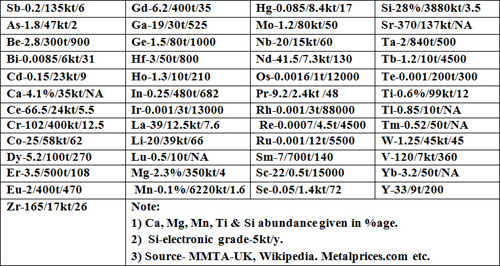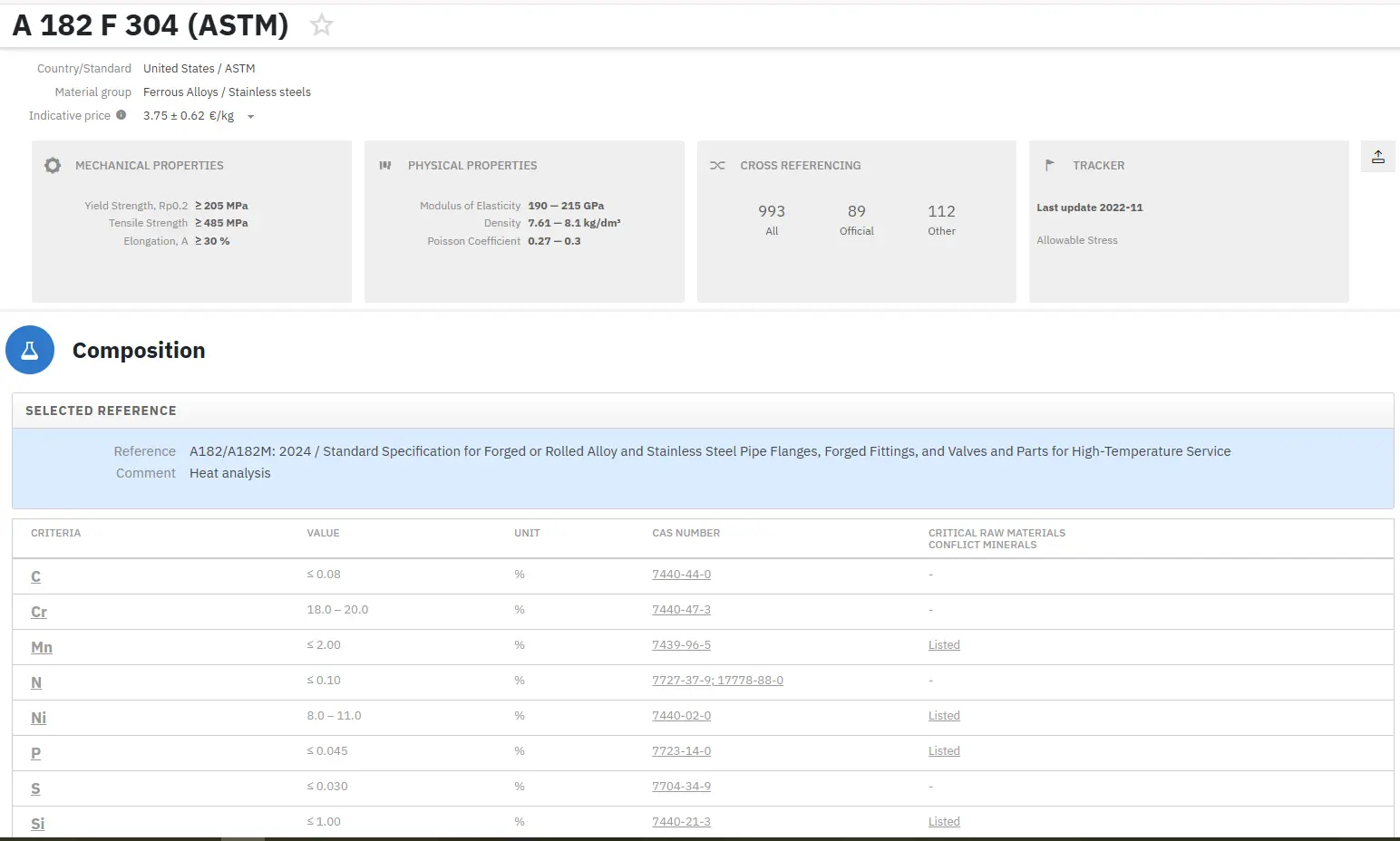Minor Metals & Mineral Conservation an Overview: Part Four
by Dr Pradeep K. Maitra, Smriti Nagar Bhilai, India
Abstract
For controlling metal depletion the drainages are to be judicially reduced at various production stages and at the same time the impetus on collection of spent EEEs (electrical and electronic equipment) should be maximized by the sellers to achieve the highest collection efficiencies.
The complex metals present in EEE are not only valuable but also rare and the conservation of these metals is extremely necessary. The main problem associated with PCBs of all EEE is the recovery of all precious metals.
Conservation of Minor Metals
The natural conservation of metal is a phenomenon, where the total mass of a metal present in the earth remains constant, i.e. it can be converted into another form but it can’t be practically destroyed. The MMs (Minor Metals) in the earth’s crust persists in finite amounts, and without recycling the metals, there will be an adverse impact on future manufacturing due to continuous depletion of existing resources. Obviously such depletion can be substantially checked through economic and efficient exploitation management systems on one hand and recovery/recycling of metals/compounds from spent commodities on the other.
According to Hegeluken & Meskers “Complex Life Cycles of Precious & Special Metals” (MIT Press-2010) the metals are lost with process wastes, during various stages of their life cycle i.e. losses occurring during mining, production/purification, by-product recoveries and manufacturing of end products. For controlling metal depletion the drainages are to be judicially reduced at various production stages and at the same time the impetus on collection of spent EEEs (electrical and electronic equipment) should be maximized by the sellers to achieve the highest collection efficiencies.
For execution of this philosophy and to turn into practice, it would be necessary; a) to build up a strong public opinion worldwide against harmful effects of toxic wastes due to unsafe disposal, b) to educate the concerned public in general and the actual users of EEEs in particular, about the significance of MMs. Accordingly all MMs & their occurrences (in ppm) in the earth’s crust, productions (t & kt/y) and economic values in ($/kg) are tabulated and shown in Table - 5. The production & pricing figures are only indicative prevailing during 2011& 2007.

Table 5: Element Symbol-Occurrence (PPM)/ Production(kt) / Values ($/kg)
From these indices it may be seen that few MMs are extremely expensive (Rh, Sc), some are very expensive (Ru, Re, Os & Ir) and several elements (As, Sb, Cd, Ce, La, Mg, Mn, Si, Ti etc) are comparatively not so expensive. Similarly the MMs in the earth’s crust and their production vary extensively. Some metals like Ir & Pr are produced in small quantities, but the compounds of several MMs may have wider applications than pure metals.
For recovery & recycling of MMs, the industrial process wastes & scrap can be divided into three major groups as given below.
1) Process effluents or wastes - The term waste is generally obsolete, as the products other than primary metal are regarded as by-products however the term is still in use. In ferrous and non-ferrous industries during metal extraction various by-products are generated, for example;
Slag – A mixture of metal & oxides generated during ore smelting, where the entrapped metal is recovered. The flue dust of smelters contains several MMs which are recoverable. The following wastes are usually generated from Al, Cu, Zn & Pb industries;
Red Mud- The bauxite residue left after alumina extraction of the Bayer process.
Dross is a solid material, which contains recoverable metal, oxides & fluxes,
Matte - a mixture of metal sulfides, produced during smelting the sulfide ores of Cu, Pb & Ni,
Speise - metallic arsenide and antimonide produced in the smelting of, Co, Ni, and Cu ores,
Anode slime - collected from the bottom of the electrolytic cells during the refining of Cu.
All such wastes except red-mud (only Russia is planning to put up a plant to recover valuables from Red-mud) are processed and various MMs are recovered.
2) Metal scrap - The term scrap is used to describe “recyclable materials” left over from any process activities, the bulk structural metal scraps are generally received from industry. The mixed scrap is a combination of similar/dissimilar, ferrous/non-ferrous, virgin metals/alloys, which may have different shapes and sizes such as pipe rods, plates, wires, strips, gears, spindles, rolls, wheels machine components light and heavy machineries derived from marine & air transport vehicles such as ships, submarine, air planes, and satellites after their dismantling.
The other sources are railways, automobile and other surface transport vehicles and vehicle parts inclusive of catalytic converters consisting of platinum, palladium and rhodium, radiators, batteries etc. The spent domestic amenities include washing machines, air conditioners, refrigerators, utensils, municipal wastes, pipe, and stainless steels. Most non-ferrous metal scraps include, Al, Cu, Zn, Pb, brass, bronze, high temperature, corrosion resistant, shielding, and many grades of Ni & Co alloys, spent catalysts, etc..
3) Electronic scrap - The EoL EEE wastes include computers, equipment for information and communication, home appliances (e.g., laptops televisions, VCR, DVD, camera etc) and all of their peripherals. Usually the complex multi component electronic waste contains precious metals (Ag, Au, Pt, Pd, Rh, Ir, Ru etc.), soft metals (Sb, Sn, Bi etc), base metals (Pb, Cu, Ni etc.), rare earth metals (Ce, La, Nd, Sm, Tb, Eu) and metalloids (In, Se, Te, Ga etc.) in very low concentrations.
The advanced electronic appliances currently contain about 60 metals, and according to a status report of studies “Recycling Rates of Metals” (UNEP-2011), one-third of it, i.e. 20 metals have an EoL recycling rate above 50 %, & ~34 elements are below 1% recycling. The complex metals present in EEE are not only valuable but also rare and the conservation of these metals is extremely necessary. The main problem associated with PCBs of all EEE is the recovery of all precious metals. The recycling rates of REEs are also extremely low due to their poor collection and uneconomic realization of metal from spent commodities and lack of efficient waste processing technologies, therefore the fullest recovery of all these elements is difficult from EoL EEEs.
The existing inadequate recycling of MMs worldwide not only widens the gap between demand & supply of MMs but also damages the environment with residual unrecovered toxic materials. The recovery of Se from spent metallurgical products is the highest.
The recovery of Se, In, Ga, from electronics & photo-voltaic (PV) wastes are satisfactory, whereas the recovery for Te persists only in spent PV components. For recycling PV components only two methods one for crystalline silicon & the other for Cd-telluride have been established. The UNEP report, “Recycling from E-waste to resources” Solving the E-Waste Problem (StEP) Initiative (July-2009) where focus lies on a consistent set of different types of metals (Ag, Au, Pd, Pt, Ru, Cu, Sn, Sb Co, Bi, Se & In) which are recoverable from ~ 4.7 million tons/y of EEE wastes.
According to Martin Goosey & Rod Kellner “A Scoping Study End-of-Life Printed Circuit Boards”, (Shipley Europe Ltd, August-2002) the composition of EoL contains 70% glass reinforced polymer, Cu-16%, Solder-4%, Fe-3%, Ni-2%, Ag-0.05%, Au-0,03%, Pd -0.01% & Bi+ Sb+ Ta= <0.01%.
Find Instantly Precise Compositions of Materials!
Total Materia Horizon contains chemical compositions of hundreds of thousands materials and substances, as well as their mechanical and physical properties and much more.

Get a FREE test account at Total Materia Horizon and join a community of over 500,000 users from more than 120 countries.